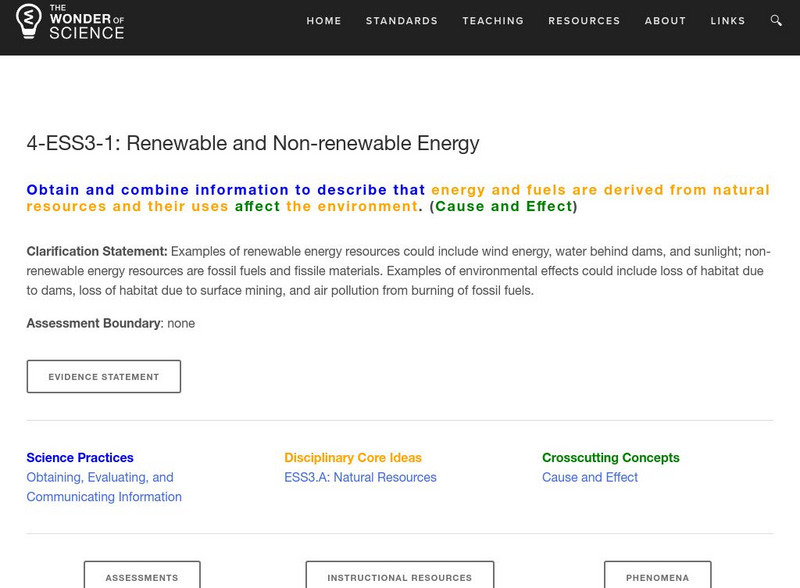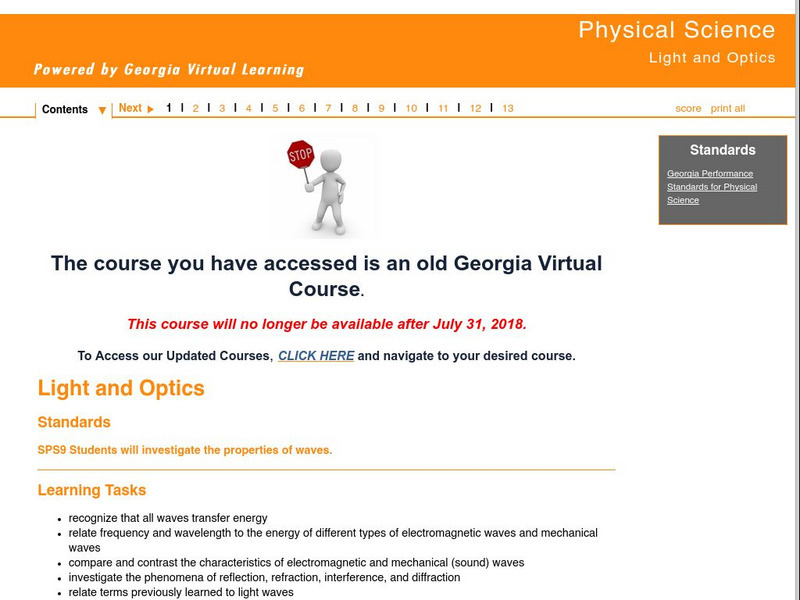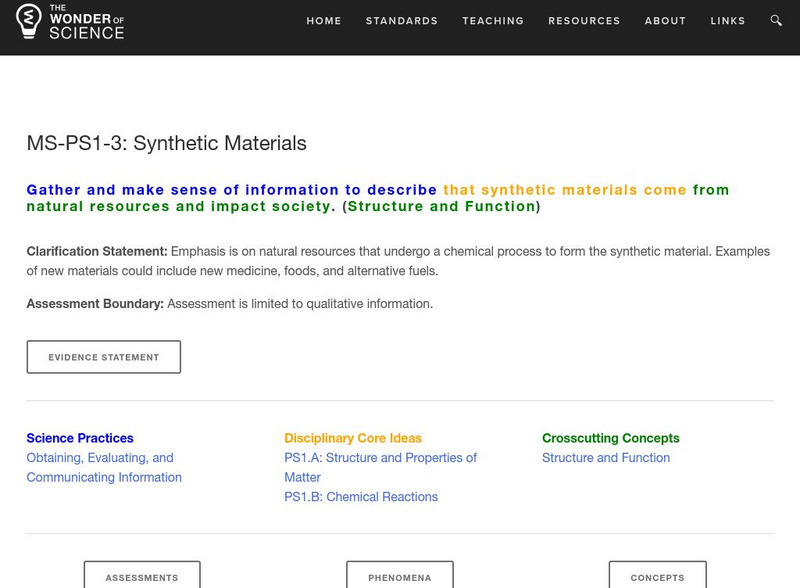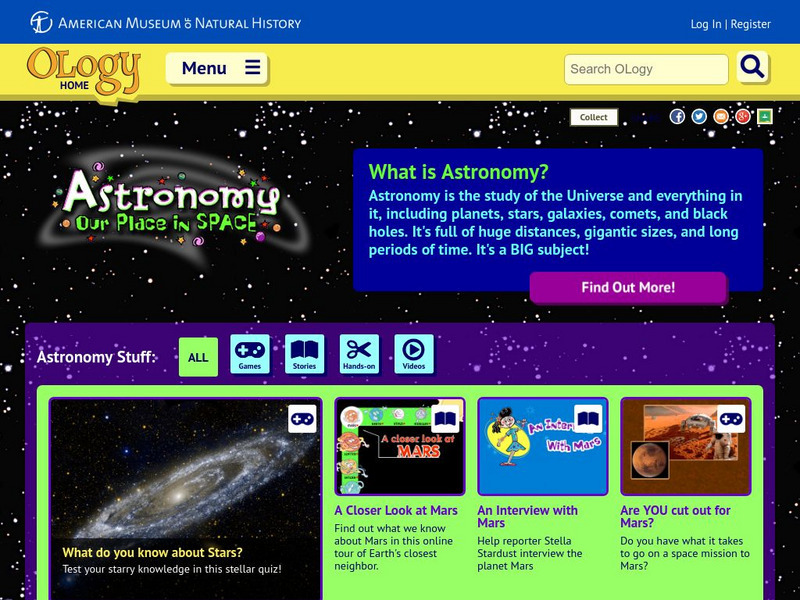Hi, what do you want to do?
Curated OER
Hibernating Hoopla
Young scholars simulate hibernation with their stuffed animals. They predict the length of time of hibernation and type their math journal entries about sorting, graphing and draw pictures. They read bear hibernation stories.
Curated OER
Visual Opacity
Students discover the difference between transparent, translucent and opaque. They use those descriptions to classify clouds. They create a presentation in which they show the different types of clouds with their descriptions.
Curated OER
Africa's Climatic Regions
Students are introduced to the different climates and vegetation of Africa, and compare them to similar climatic regions found in the United States.
Curated OER
Understanding Celsius
Student read both Celsius and Fahrenheit temperatures on thermometers. They covert the temperatures and write poems to show understanding.
Curated OER
Building a Scale Model
Third graders create a model of the solar system. In this solar system lesson, 3rd graders create a scale model of the solar system. Working in pairs students solve mathematical problems to correctly measure the distance each planet is...
Curated OER
Discovering the Physical Geography of Washington
Learners develop a mental map of the state of Washington and draw it on paper. Using the Virtual Atlas, they identify the physical features of the state and draw them on their map. They also examine the populations and diversity of the...
Curated OER
Pauli's Magical Water
Students predict the shape of molecules using VSEPR theory. In this chemistry instructional activity, students differentiate a polar and nonpolar molecule. They discuss why water's polarity is very important.
PBS
Pbs: Earth Science Exploration
An earth science collection where students can explore earthquakes, volcanoes, and more natural phenomena. The collection uses videos and interactive activities to investigate our dynamic planet and earth systems.
Story Behind the Science
Story Behind the Science: Detection of Black Holes [Pdf]
Article outlining the scientific history behind the discovery of black holes. The writer discusses how scientific theories guide scientists in creating explanations for natural phenomena.
Story Behind the Science
Story Behind the Science: The Story of Dark Matter [Pdf]
The scientific history behind the discovery of dark matter. Questions are posed throughout about how theories are developed to provide possible explanations of natural phenomena.
American Institute of Biological Sciences
Action Bioscience: Natural History Museum Collections in the 21st Century
Discover why some people feel that natural history museums are more import now than they have ever been. Familiarize yourself with some of the challenges these museums are facing.
The Wonder of Science
The Wonder of Science: 4 Ess3 1: Renewable and Non Renewable Energy
Work samples, phenomena, assessment templates, and videos that directly address standard 4-ESS3-1: renewable and non-renewable energy.
Georgia Department of Education
Ga Virtual Learning: Physical Science: Light and Optics
Students will investigate the properties of light waves. They will learn about the different types of electromagnetic waves and mechanical waves, and investigate the phenomena of reflection, refraction, interference, and diffraction.
The Wonder of Science
The Wonder of Science: Ms Ps1 3: Synthetic Materials
Do you need some materials to help you do a lesson on synthetic materials? This site contains work samples, phenomena, assessment templates, and videos that cover the materials synthetic materials come from and how they impact society.
The Wonder of Science
The Wonder of Science: Ms Ess3 1: Uneven Distribution of Earth's Resources
Work samples, phenomena, assessment templates, and videos that directly address standard MS-ESS3-1: uneven distribution of Earth's resources.
American Museum of Natural History
American Museum of Natural History: O Logy: Astronomy: Our Place in Space
This resource is a place for learning all about astronomy--stargazing, planets, space science, and interesting astronomical phenomena and discoveries. Explore, ask questions, find information, and meet American Museum of Natural History...
The Wonder of Science
The Wonder of Science: 4 Ess3 2: Natural Hazard Design Solution
Work samples, phenomena, assessment templates, and videos that directly address standard 4-ESS3-2: natural hazard design solution.
The Wonder of Science
The Wonder of Science: Ms Ls4 4: Natural Selection
Work samples, phenomena, assessment templates, and videos that directly address standard MS-LS4-4: natural selection.
Georgia Department of Education
Ga Virtual Learning: Ap Physics 1: Work, Energy, and Power
The mathematical model for the relationships between work and energy serves to model physical problems and, more importantly, predict natural and man-made phenomena. Students discover the relationships which serve as a powerful...





















